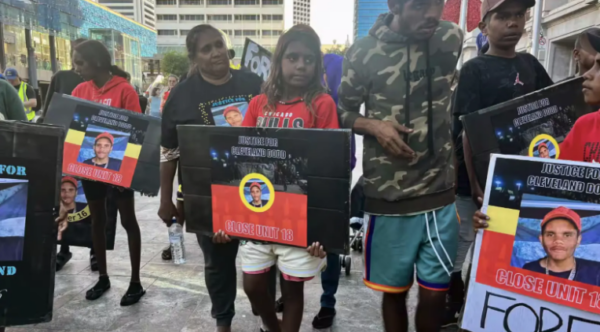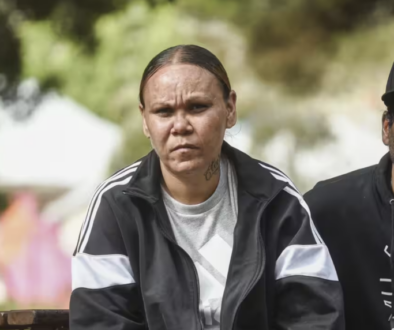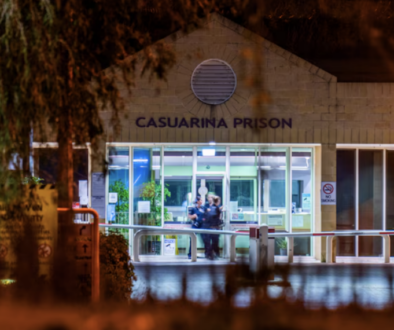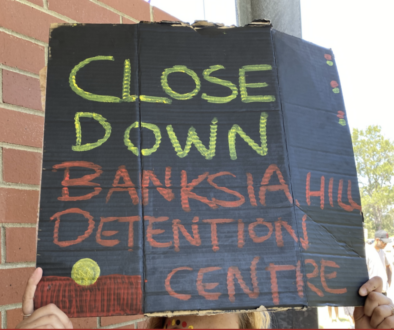Inquest shines a light on Western Australia’s youth injustice system
The letter that Cleveland Dodd wrote to his father just weeks before taking his own life in a Western Australian youth detention centre was never delivered. Cleveland, a 16-year-old Yamatji boy from Meekatharra, was awaiting trial when he was transferred from Banksia Hill, the state’s main youth detention centre, to Unit 18, a second facility established within an adult jail in 2021 to house “disruptive” detainees.

Cleveland made eight calls to staff on the night of his death, asking for water and Panadol, and to see the nurse. Staff told him to be patient—but he had run out of that. Cleveland had been in Unit 18 for nearly three months when he hanged himself from a broken air vent on 12 October last year.
A coronial inquest has now heard how and why Cleveland became the first Aboriginal person to die in youth custody. While the coroner’s findings have yet to be released, eyewitness testimony and admissions on the stand in recent months have painted a picture of the callous neglect, racism and brutality of Western Australia’s juvenile detention regime. Now, as the inquest adjourns before a third session later this year, another teenager, whose name has not been released, has died in custody.
Located in the maximum-security adult prison Casuarina, Unit 18 was established in response to rebellions against the awful conditions at Banksia Hill—conditions so bad that Children’s Court President Hylton Quail preferred to sentence offenders to time served or send them to adult prisons to keep them out of the place.
The WA Supreme Court has twice found that Banksia Hill and Unit 18 violated state and international laws against solitary confinement. Even the Office of the Inspector of Custodial Services was forced to concede that Banksia Hill’s Intensive Support Unit, nicknamed “the cage”, violated detainees’ human rights.
Long before Cleveland’s death, youth justice advocates and organisations such as the Aboriginal Legal Service had criticised the government for failing to address the prevalence of self-harm at Banksia Hill and Unit 18. There were twenty attempted suicides and more than 350 instances of self-harm in Unit 18 alone before Cleveland killed himself.
Responding to criticisms last year about the facilities, Corrective Services Minister Paul Papalia said: “This particular cohort of young people regularly self-harmed wherever they were”. The insinuation is that locking young Indigenous people in jail makes little difference.
“That’s basically a slap in the face”, Megan Krakouer, a Noongar woman and director of the National Suicide Prevention and Trauma Recovery Project, told Red Flag. “[Papalia is] a very inhumane person who has no idea about the grim reality, who is not immersed in what the challenges are that face First Nations people, and most certainly the most vulnerable cohort.”
Krakouer and Gerry Georgatos, a university researcher and human rights advocate, have worked on programs to combat self-harm and suicide at several prisons across Western Australia, including Banksia Hill and Unit 18. But they have been shut out for encouraging youth detainees to join a class action against the government’s youth detention regime.
“We couldn’t sacrifice our morality”, Georgatos told Red Flag. “We wanted the funding; we wanted to keep on working. But we were going to call out, on behalf of all those others, all the crap we saw on the inside. All the racism, all the classism, all the inhumaneness.”
They both expressed grave concerns about the institution and the people running it. “How can we believe anything that the government says? Particularly with what we’ve heard at the Cleveland Dodd coronial inquest, where they’ve been very untruthful and have misinformed the public”, Krakouer said.
In April, the first session of the inquest focused on Unit 18 staff. Some of them spoke about chronic dysfunction and a culture of negligence. Guards regularly watched movies on shift, logged false welfare checks hours in advance, and routinely failed to carry their walkie-talkies, the inquest heard. The senior officer on duty the night Cleveland died reportedly was napping. Maintenance was repeatedly deferred. When Coroner Urquhart visited the facility six months after Cleveland’s death, seven of the unit’s sixteen cells had similarly broken air vents that could be used as ligature points.
Negligence is why Cleveland was not visited by any mental health professionals during his thirteen weeks in Unit 18, despite him being diagnosed with major depressive disorder and a language disorder. It is also why his complaints about the pain in his left ear (from an infection), recurring headaches, bronchitis and untreated dental issues weren’t taken particularly seriously. Staff admitted that his dental care was repeatedly postponed.
Over two days of testimony, nurse Fiona Bain described the situation in Unit 18 as desperate, with up to 50 threats of self-harm or suicide per day. Officers routinely checked on detainees in person or through monitoring cameras installed in their cells. The teenage detainees would cover the cameras with wet tissue paper to maintain some privacy. In response, the guards would leave them restrained and alone in their cells, sometimes for hours.
Detainees who “acted out” were not given water after their evening meal, despite the requirement under international humanitarian law that prisoners be given water on request. Senior officers also reportedly denied medication to frustrated and aggressive detainees.
The second session of the inquest, held from 22 July to 16 August, investigated the role of senior officials in the Department of Justice. Former Director General Adam Tomison had to be subpoenaed to appear. Dr Tomison, an internationally renowned expert on child abuse and family violence, accepted that the facilities he had helped to create were perpetrating “institutional abuse”. Counsel assisting the coroner read extracts from letters that the department sent to family members of the detainees and others, falsely claiming that Unit 18 would have all kinds of dedicated services for inmates. Tomison admitted that these assurances were lies.
The inquest then turned its attention to a briefing note given to Justice Minister Bill Johnston before the creation of Unit 18, which Tomison admitted contained “a series of grievous lies”. The note, drafted by the department’s strategic communications team, passed unchallenged through the hands of both former Corrective Services commissioner Mike Reynolds and former deputy commissioner for Young People Christine Ginbey. By the time Ginbey made it to the stand, she had hired a lawyer.
Ginbey appeared just hours after the inquest heard that the State Solicitor’s Office had released a trove of documents, including her statement. The documents included a Unit 18 operating manual and further information about the genesis of the unit. “The court must have real concerns about whether we have got everything that is relevant”, counsel assisting the coroner said.
Unit 18 was supposed to be open for only one year, from July 2021 to July 2022. Cleveland died more than a year after the facility was planned to be shut. Ginbey revealed on the stand that, at the time, no steps were being taken to close the facility.
Due to the delay in Ginbey’s testimony and the submission of new material to the inquest, a third session will be held in October.
“I have more confidence than ever before in terms of the way we are managing our juvenile detention facilities … I believe that we can say that those children are safe”, was Premier Roger Cook’s line at a press conference on 31 August, which was called to announce a second death in youth detention.
“The comments were insensitive, unconvincing and offensive … They seem not to understand that a child died last night at Banksia”, Kurin Minang Noongar woman Dr Hannah McGlade, a human rights advocate and lawyer, told Red Flag after the press conference. “Aboriginal children’s lives matter; we want our premier to meet with us and live up to his commitment to reform youth justice.”
At the press conference, Corrective Services commissioner Brad Royce said: “What we need to spend more time [on] and will take generational change is the young people themselves. When they come to me, I have very short periods with them … for me this is going to take a significant piece of work and it will be generational to get through this”.
In other words, it’s tragic, but it’s up to the young Aboriginal people themselves to stop dying in custody. One hundred and ninety-five years after the Swan River colony was established, the government is still blaming Aboriginal people for their own oppression.
“It’s not just about moral and political will; it’s cowardice”, Georgatos said of the excuse-making. “It’s not just the ministers who have the portfolios and the cabinet who have responsibility; it’s every politician in the party room. It’s every politician on the back bench. It’s every politician in the Labor Party that should hang their head in shame that they haven’t raised the alarm bells when they’ve seen so much wrong and injustice go on, so many lives put at risk—it’s every politician.”
The inquest resumes in October.
Contact us
Please provide a brief description of your claim.



